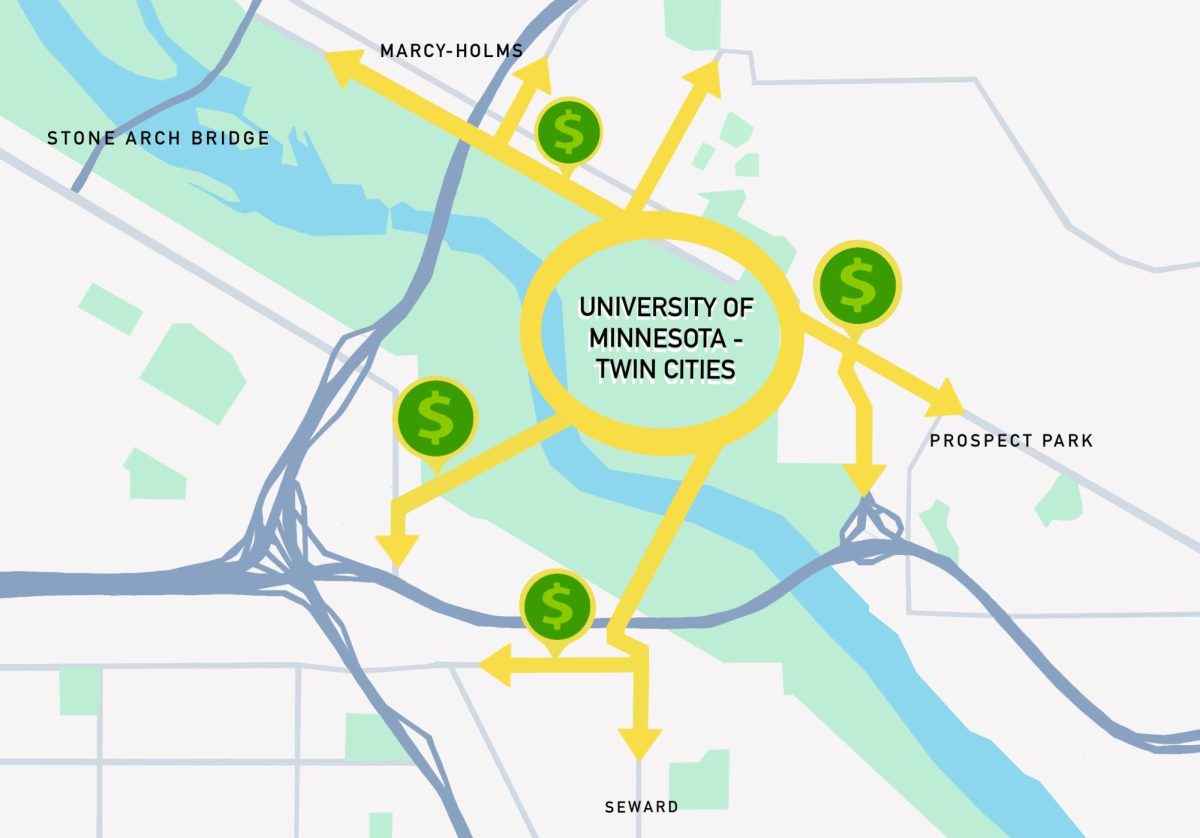The University of Minnesota’s 17-year-old Good Neighbor Fund lives on as a way for the University to support neighborhood organizations’ efforts to beautify the neighborhoods.
Local neighborhood or business organizations are eligible to apply for the funds, and they only need to follow a few simple steps to do so, according to the Executive Director of Government and Community Relations for the University Melisa López Franzen.
The Good Neighbor Fund started in 2007 with a state grant over concerns about how the eventually named Huntington Bank Stadium would impact the surrounding neighborhoods, Franzen said in a statement.
If an unaffiliated non-profit wants to apply, it must partner with a neighborhood association.
After groups send in the applications, the Good Neighbor Fund team evaluates the projects based on the benefits to the stadium area, effects on the broader neighborhood, feasibility and more. The projects that meet these requirements receive funding.
Since the grants began, the University has given over $1 million through the funds to local community organizations, Franzen said in the statement. This year, the Good Neighbor Fund will total around $100,000.
Past projects funded through the Good Neighbor Fund included crime prevention efforts and adding bike racks. In 2017, the Dinkytown Business Alliance won the Good Neighbor Fund to preserve decade-old murals.
Claire Thefaine, a Southeast Como Improvement Association board member, said she wants funding for a project to educate students about the newly formed East Bank Neighborhood Partnership.
According to Chris Lautenschlager, the executive director of the Marcy-Holmes Neighborhood Association, the grant was meant to help deepen the relationship between the University and the surrounding communities.
“They believed that it would create significant impacts to the neighborhoods,” Lautenschlager said. “Whether that’s quality of life, whether that’s graffiti, whether that’s vandalism, whether that’s loitering, whether that’s drunkenness. They had a lot of concerns that the stadium, by virtue of it now being located back in the neighborhoods.”
Kathy Knudson, a board member of the Southeast Como Improvement Association, said the grant helps bridge the gap between University students living in the neighborhoods and their neighbors who are generally older and not university students.
“I think it brings the groups together a lot because it’s especially with some of the ones we’ve done like the art fair in the park,” Knudson said. “With that one we worked very closely with off-campus living and so we had a lot of student volunteers and there’s some of us old-timers.”
Those who live near the University can still apply for funds as long as they partner with a local neighborhood organization, Lautenschlager said.
Thefaine said any community members with ideas for potential projects should reach out to their local neighborhood associations.
“Someone will put you in contact with the right person to help get your idea up and running,” Thefaine said. “There’s plenty of funds to go around for smaller projects, and we really welcome community input into these projects.”














